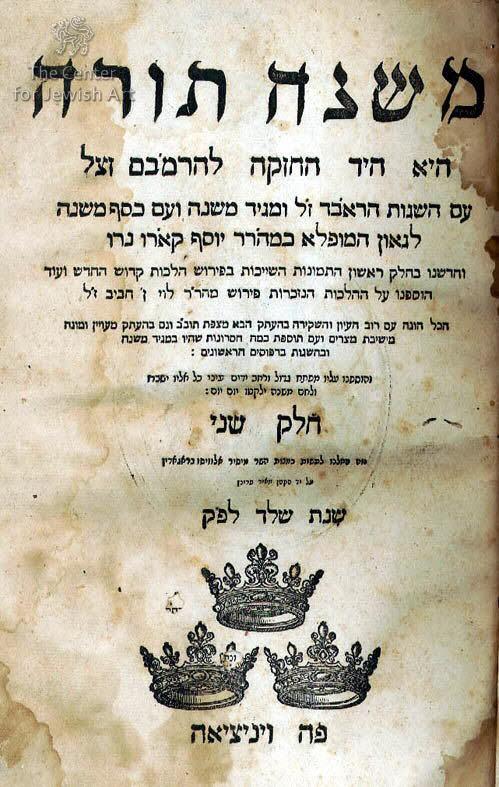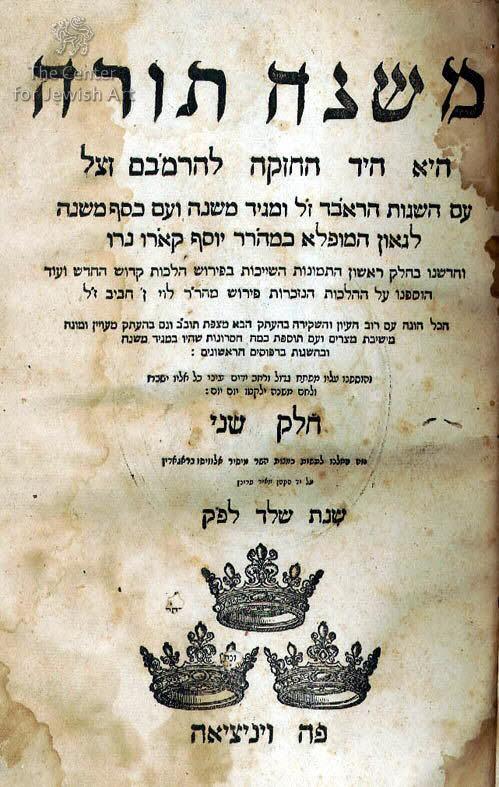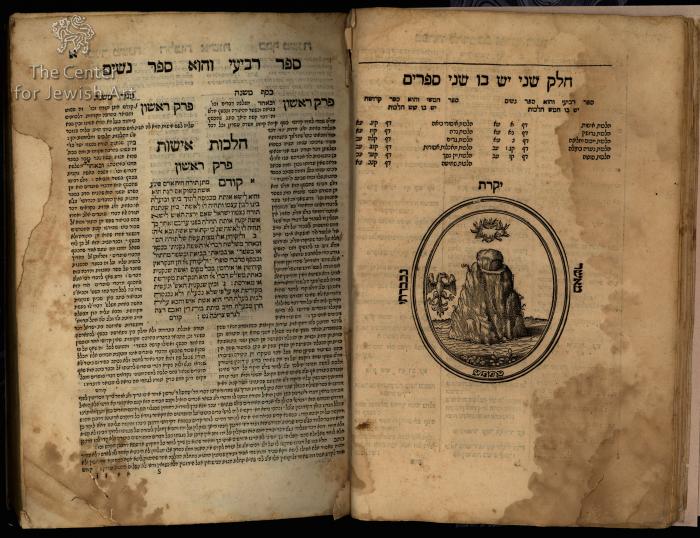Obj. ID: 38424 Mishneh Torah, with the Kesef Mishnah by Yosef ben Ephraim Karo, Venice, 1574

sub-set tree:
This text was prepared by William Gross:
This early edition of the Mishneh Torah was published in Venice at the time when this city was the center of Hebrew printing for all of Europe. It was published by the non-Jewish firm of Bragadini, who were major publishers of Hebrew texts for many decades. Their printers mark of three crowns adorns the title page.
The Mishneh Torah (Hebrew: מִשְׁנֵה תּוֹרָה, "Repetition of the Torah") is a code of Jewish religious law authored by Maimonides between 1170 and 1180, while he was living in Egypt. It is regarded as Maimonides' magnum opus, and is the only medieval-era work that details all of Jewish observance, including those laws that are only applicable when the Temple is in existence.
Yosef Caro's commentary, the Kesef Mishnah, is a standard and basic commentary, printed together with all editions of the Mishnah Torah.
In 1550 Alvise Bragadin established a Hebrew press in Venice, thus ending a brief monopoly in Hebrew printing in Venice enjoyed by Guistiani (after the closing of the Bomberg press). This press continued as one of Venice’s leading Hebrew print-shops, issuing Hebrew titles in the 18th C under several generations of Bragadins (the last of whom was Alvise III). Throughout the years, the output of the Bragadini press was considerable, and covered the gamut of Hebrew works. The press was somewhat unusual, however, in that the Bragadins themselves did not always take an active role in their printing-house, leaving its operation to other printers, and lending their name to other presses. In this edition, Meir Parenzo was the printer for Bragadin. His device, Venus, standing above a seven-headed dragon, holding an arrow in her right hand pointed toward the dragon, is on the verso of the title page that bears the Bragadin emblem. This is the only known use of this mark, which is surrounded by the phrase "And the king shall desire your beauty" (Psalms 45:12), the meaning of which is indeterminate.




